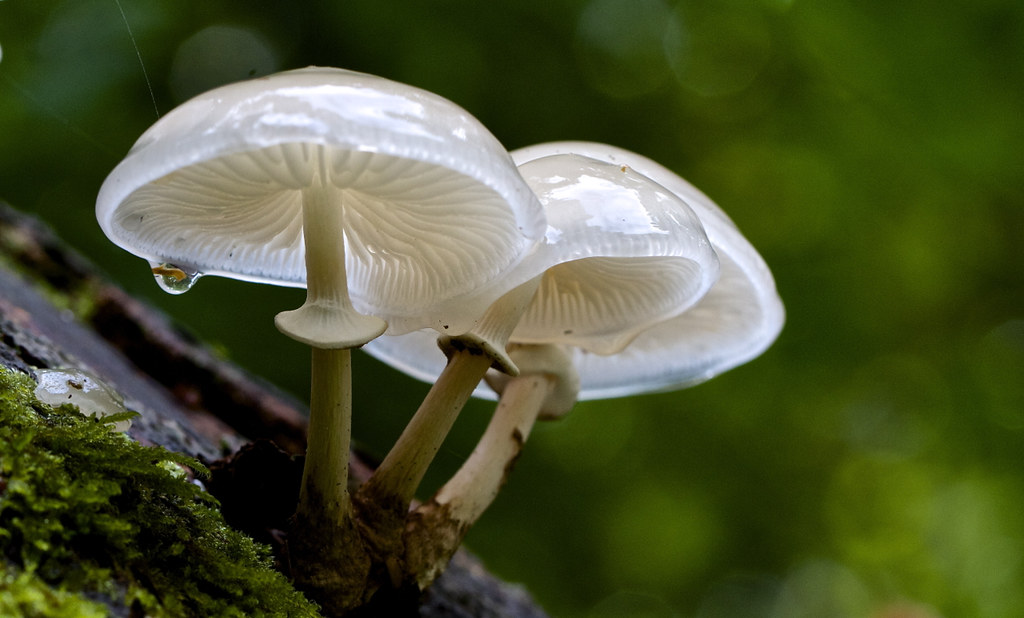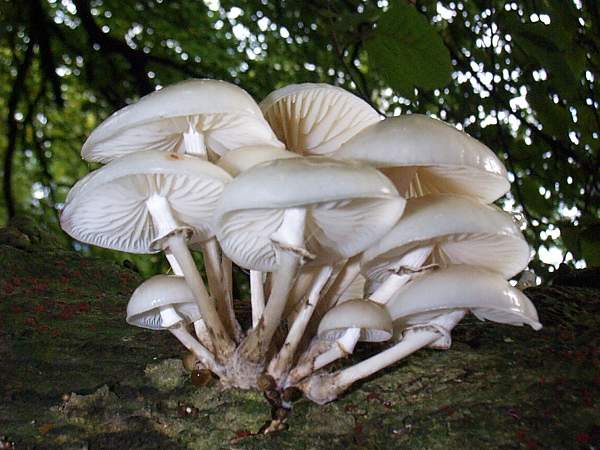Oudemansiella mucida
Book - Porcelain Agaric ( Oudemansiella mucida )
The beech or Ringed Porcelain Agaric ( Oudemansiella mucida ) is a species of fungus in the family Physalacriaceae.
Features
Macroscopic characteristics
The fruiting bodies are usually tufted. The cap is 2-10 cm broad, at first convex, later spread flat, pale gray young, then whitish in color with a slight ocher approach in the middle, somewhat translucent, slimy. The slats are wide and standing away. The abundant delivered spore powder covered often the environment of the fruiting body. The 30-100 mm long and 3-10 mm thick stalk is weißstreifig above the grooved ring below a little flaky. The Book - Porcelain Agaric has thin, white meat.
Microscopic characteristics
The spores are white and almost spherical and measure 13-18 × 12-15 microns. The hat skin consists of club-shaped, erect, densely packed cells.
Ecology and distribution
The Book - Porcelain Agaric grows saprobiontisch or parasitic on branches or trunks of beech, rarely on other deciduous trees, rarely on spruce, it is found mainly in the highlands. Its fruiting bodies appear in central Europe from July to October. The species is widespread Europe and Asia, particularly in the area of the Book in the affected oceanic, temperate zone.
Importance
The Book - Porcelain Agaric is edible after thorough washing, but is not considered a valuable edible mushroom. From its mycelium an antifungal agent was obtained, which can be used against skin fungi.




.jpg)





